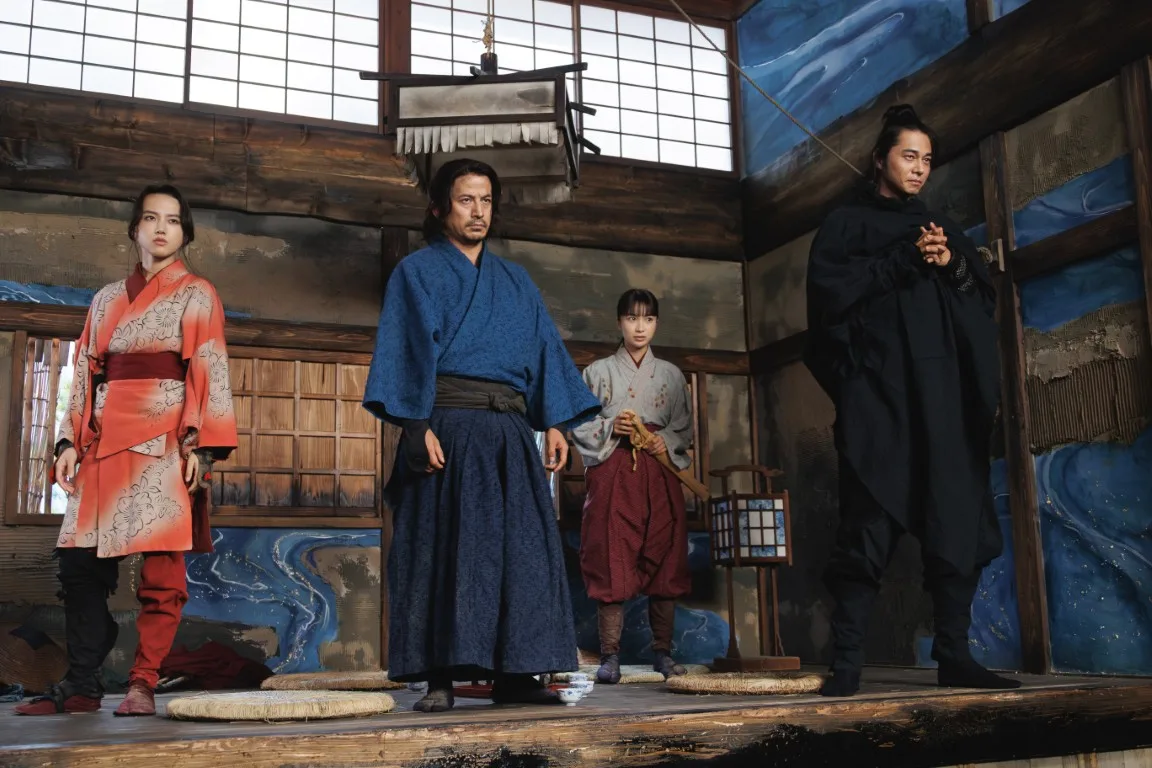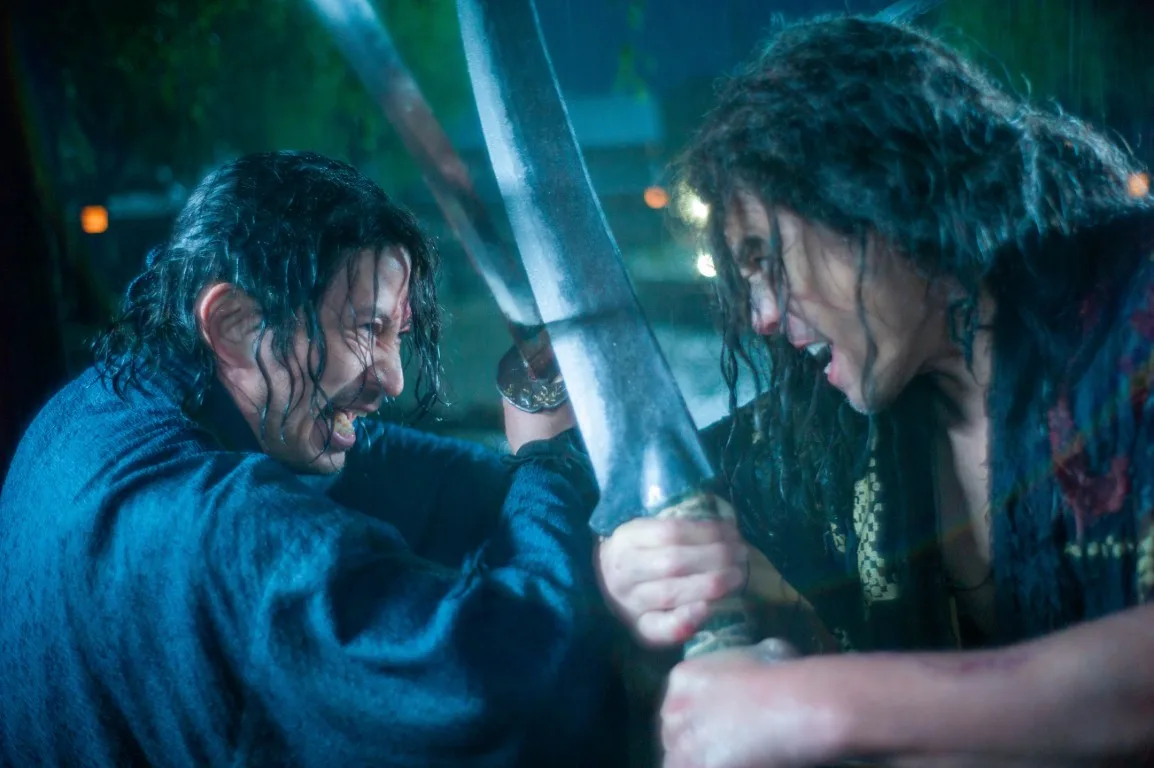Edgar Wright’s “The Running Man” may be the survival-based class commentary action thriller released this week on the big screen. On the small screen, however, look for Netflix’s “Last Samurai Standing,” which features similar elements weaved through a story inspired by the end of the samurai class era. The series, based on Shogo Imamura’s manga series Ikusagami, continues the streamer’s trend of live-action manga adaptations such as “One Piece,” “Yu Yu Hakusho,” and “Parasyte: The Grey.” “Last Samurai Standing” is a new peak in the subgenre, standing out as one of the best action TV dramas of this year.
Imagine a version of Fukasaku’s “Battle Royale” that is set during the Meiji Restoration, a period in the late 19th century when the feudal caste system was dismantled and rendered obsolete. Much like Fukasaku’s masterpiece, it captivates via striking a distinctive blend of social commentary and entertaining sequences of grisly violence.
The six-episode first season unfold largely through the viewpoint of Shujiro Saga (a compellingly solemn Junichi Okada), a former coveted assassin to government officials, which earned him the nickname “The Manslayer”. “Kodoku,” the series premiere, starts at the exodus of the Boshin War at the Battle of Toba-Fushimi. Imperial forces and their guns and cannons defeat Shujiro and his fellow samurai there, making samurai obsolete.
Nearly a decade later in 1878, a surviving Shujiro struggles with PTSD. His village, as well as his family, experiences the cholera pandemic. His young daughter passes away from the disease, and his wife (Riho Yoshioka) and son soon become ill, contracting it themselves. As all hope seems to be lost, Shujiro receives a mysterious invitation to a Kyoto-based Tenryū-ji temple for a tournament, with 100 billion yen as a grand prize.

There, he finds himself one of 292 warriors, ranging from samurai to archers, many of whom were either surviving war veterans, poverty-stricken, or failed to adapt to the new Meiji world. Host and overseer Enju (Kazunari Ninomiya) reveals that they’re now in a game called “Kodoku.” In the game, contestants must take the Tōkaidō route (from Kyoto to Tokyo) and obtain their fellow players’ tags by killing them. At each pit stop, they must collect up to a specific amount. Only nine players can reach the final destination, and by then, must have 30 tags each.
The game commences. In a matter of seconds, swords fly, blood spills, and body parts are graphically dismembered. Activating a very Pedro Pascal-esque protective father mode, Shujiro defends the young Futaba Katsuki (a soulful Yumia Fujisaki), who is there just to save her mother, and she joins him as his comrade. Along the way, the two encounter and ally themselves with Shujiro’s fierce swordsman sister-in-law (Iroha Kinugasa) and Kyojin Tsuge (Mashahiro Higashide), a witty self-proclaimed “strategist.” Together, they attempt to survive, as dangerous warriors such as the barbaric “Savage Slasher” Bukotsu (a terrifying and engrossingly charismatic Hideaki Ito) loom.
“Last Samurai Standing” is an exceptional action spectacle unlike anything I’ve seen in the medium of television and film this year. Series directors Michihito Fujii and Kento Yamaguchi (both co-writers), as well as Toru Yamamoto, brilliantly expand the scope of the Tōkaidō journey to create an epic backdrop that serves as a battleground for exquisitely crafted swordplay or mixed-weapon sequences. Every episode captivates with its raw, extremely violent sword fights, which are masterfully filmed, choreographed, and edited. Every action scene builds in size and scope, highlighting the vibrant yet dystopian post-feudal world. Each actor, who all perform their own stunts remarkably—with lead Okada serving as the primary action choreographer and producer—delivers a kinetic commitment to the craft through their spirited performances.

Fujii and Yamaguchi effectively deconstruct the sociopolitical elements of the era through the colorful and charming set of samurai warriors and their journey. The emotional heart stems from Shujiro and Futaba’s relationship, specifically the latter’s empathetic regard for human life. She serves as a beacon of hope in this harsh, grisly world, and her empathy is a source of illumination.
Considering this tournament has 200 fighters, the show’s only flaw is that the writers attempt to feature far too many characters for a short number of episodes. Characters will be introduced in cool flashbacks, only to be dispatched moments later. But many of the “surviving ones” are well-developed. The main characters are all very likeable and have great chemistry with each other, which makes you want to root for them to stay alive.
The show admittedly wanders into cartoonish territory, as certain elements of the action become absurd and the personalities, designs, and skill sets of the aggressive fighters are reminiscent of those in “Mortal Kombat” (ironically, the season finale is titled “Mortal Combat”). The writers and energetic cast, however, maintain a well-balanced tone by knowing when to allow the vibrant elements to be spotlighted and when to rein it in to spotlight the human element.
Ultimately, “Last Samurai Standing” is a fully realized and epic action series that seamlessly integrates some of the most intricate action filmmaking to be seen on television in years with a beating human heart that makes us care.
Whole season screened for review. Now on Netflix.












